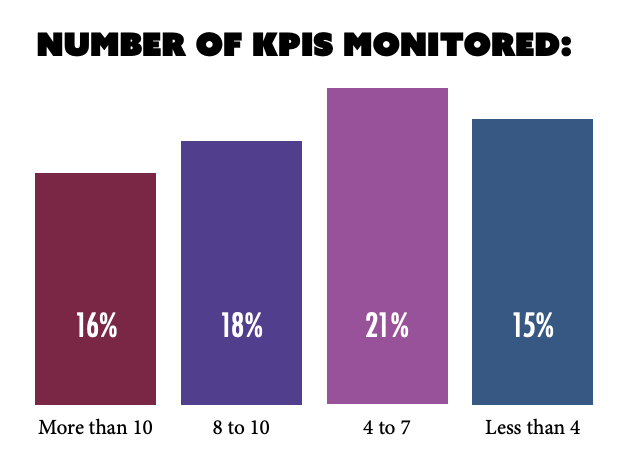The Shifting Sands of Field Service Management
Our world is changing before our very eyes.
At every junction parts of our lives, both personal and working are becoming digitalised, automated and optimised. While this is something being seen across almost all vertical industries, the field service sector is very much at the coal face, feeling the wind in our faces as this rapid evolution into a new paradigm of industry spirals around us at full pace. In many ways, this could be put down to the fact that for a long-time field service as a sector has embraced the two core factors driving our industry forward – technology and people.
It seems like it has been the norm for forever for us all to walk around with more computing power in our pocket than NASA used to send man to the moon, but the fact is this is a recent trend approaching its first decade of maturity. Field Service Engineers meanwhile have been collecting and returning data from the field, via mobile devices for far, far longer. Technology has been interwoven into the fabric of field service delivery for a long time. Similarly, delighting customers has always been at the heart of excellent field service delivery.
This has then been further magnified ever since the global financial collapse of 2008 – which saw margins reduced to their bare bones meaning those that survived in those testing times, and who went on to thrive later, were those who were able to compete on the only metric that remained – customer satisfaction. Indeed, it could be argued that it is the success of those companies that were able to navigate the troubled waters of 2008, that has in some manner plotted the course for the future of our sector as servitization, a business strategy that has been in effect at least since the 1960s if not earlier, has begun to gain ever greater traction within industry today.
“We have seen in the last decade the introduction of a technology stack which can allow us to drive these business strategies that we have known have been coming for a long time, from concept to mainstream reality…”
It is perhaps, no coincidence that a decade after seeing customer satisfaction come to the fore as a core competitive factor, we see the rise of servitization. A business approach which in its fundamental inherent design, places the customer’s needs at its centre and as a result, if done correctly, engenders far greater customer loyalty as well as longer and ultimately more profitable contracts. Of course, it could also be argued that the reason we are seeing servitization gain momentum is that the technology that has developed almost simultaneously such as the Internet of Things (IoT), Cloud and AI has also created a perfect storm for service evolution.
We have seen in the last decade the introduction of a technology stack which can allow us to drive these business strategies that we have known have been coming for a long time, from concept to mainstream reality. Big Data, Machine Learning, Cloud, Mobile and perhaps most crucially the IoT have come together to form a crucial infrastructure that now as they begin to reach a point of relevant maturity, allow us to enter fully into a world of servitization and outcome-based services.
Either way, the truth is that many in field service are embracing both servitization and connected field service today. But as we enter these unchartered waters, how do we know what metrics should be our guides to whether we are getting things right? In this exclusive, Field Service News research report, we look at the responses of over 150 field service leaders who are facing such challenges and look to establish the metrics we should be measuring as we move to a world of digitalisation and servitization?
The research itself was designed as a broader benchmarking project to establish which key metrics were being measured by field service organisations in 2019. So to begin, let’s take a look at some of the wider findings as well provide some insight into the respondent group we worked with.
The Average State of Play in Field Service Today
Across August and September 2019, Field Service News undertook an extensive research project in which they connected with representatives of 156 field service organisations.
 These companies came from all corners of the globe, represented companies of varying sizes from enterprise to SME, with the group also representing several different industry verticals. The project aimed to understand what the core trends are today amongst field service organisations when it comes to the KPIs they are tracking. The initial responses were collected via an online survey with approximately half of the respondents also agreeing to further interview via phone and email to clarify specific responses and to offer more in-depth insight – which was provided in a ‘Chatham House Rule’ agreement to allow the respondents the freedom to answer without restrictions under anonymity. The critical headline finding of the research was that the data revealed that the most common practice amongst field service companies is to measure between 4 and 7 KPIs.
These companies came from all corners of the globe, represented companies of varying sizes from enterprise to SME, with the group also representing several different industry verticals. The project aimed to understand what the core trends are today amongst field service organisations when it comes to the KPIs they are tracking. The initial responses were collected via an online survey with approximately half of the respondents also agreeing to further interview via phone and email to clarify specific responses and to offer more in-depth insight – which was provided in a ‘Chatham House Rule’ agreement to allow the respondents the freedom to answer without restrictions under anonymity. The critical headline finding of the research was that the data revealed that the most common practice amongst field service companies is to measure between 4 and 7 KPIs.
However, the data does also show that we are beginning to see a trend in this number increasing. One reason that we are maybe seeing this trend of tracking more KPIs emerge is the impact of new service revenue strategies such as servitization which are adding an increasing demand on service delivery and a different dynamic within the workflows of service operations.
However, it is interesting to note that of the total respondents, four-fifths of these companies have adopted some form of advanced-services program. Within this sub-group, the overwhelming majority of companies stated they had adapted the KPIs they measure as a direct result of doing so. This would certainly suggest that the moves to embracing servitization and digitalisation, which we are seeing become prevalent in our sector, requires rethinking how we measure field service performance.
Even for those companies yet to move towards such advanced service strategies, the overwhelming majority of field service companies now operate as a profit centre compared to the previous traditional position of field service as a cost centre. This transition at large is now almost entirely complete, and it too has, of course, had an impact on the metrics field service companies are actively measuring.
The fact that just under a fifth of companies now identify a KPI based around profit as the most critical KPI they measure for their business is another signifier of this. However, perhaps more crucially, we see the shift in importance from field service KPIs being purely operationally focussed to being far more focused on delivering customer satisfaction. Indeed, the shift towards a customer-centric approach to service is undoubtedly beginning to take hold.
 That almost two-thirds (65%) of organisations identified customer satisfaction as either equal to or higher than operational efficiency is undoubtedly a testament to this. Equally, so too is that the data reveals that 91% of companies stated that NPS or another alternative CSAT KPI was one of the most crucial metrics they measure – or that 90% of companies use their field service engineers to collect such data from their customers. However, it is good to see that there is not a full pendulum swing here away from the metrics that track an organisations ability to deliver service efficiently.
That almost two-thirds (65%) of organisations identified customer satisfaction as either equal to or higher than operational efficiency is undoubtedly a testament to this. Equally, so too is that the data reveals that 91% of companies stated that NPS or another alternative CSAT KPI was one of the most crucial metrics they measure – or that 90% of companies use their field service engineers to collect such data from their customers. However, it is good to see that there is not a full pendulum swing here away from the metrics that track an organisations ability to deliver service efficiently.
When it comes to the most critical single KPI organisations tracked the majority of respondent companies still put operational efficiency-focused metrics as their number one priority.
This, of course, makes sense as operational efficiency and customer satisfaction should necessarily be two sides of the same coin – both of which then drive the third cog in the wheel – profitability. Perhaps the most valuable insight that the research reveals is that field service companies at large are beginning to see the importance of maintaining the balance across operational efficiency and customer satisfaction – with just over half (51%) stating this to be the case. It is this dual focus and balance across both areas that will surely drive field service organisations ever forwards if it can be achieved.
Want to know more?
FSN PRO and FSN PRO+ users can find the full paper this article is taken from in the premium resource library.
Find out more about our premium membership options here















